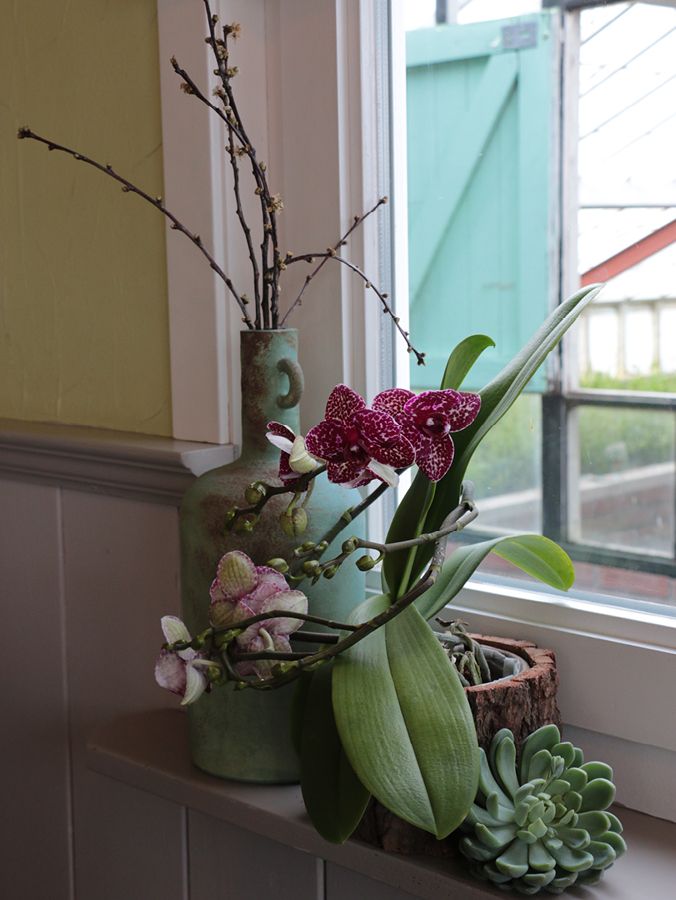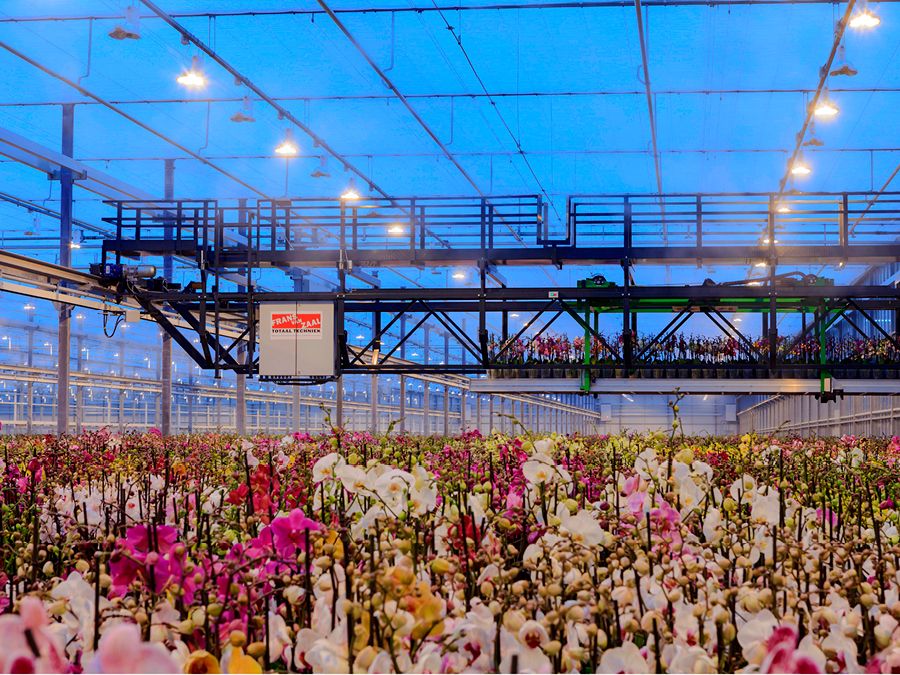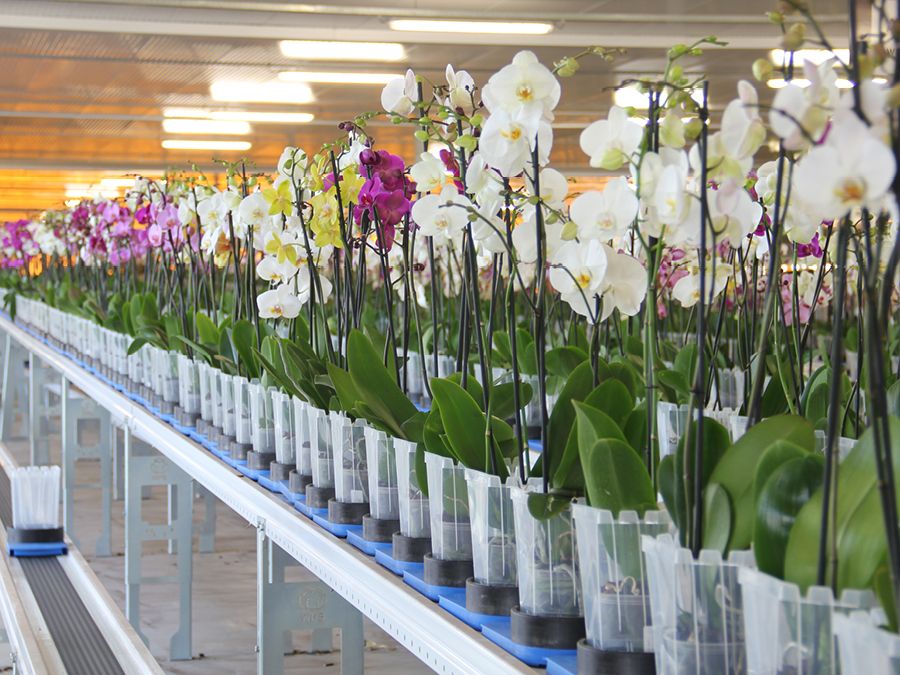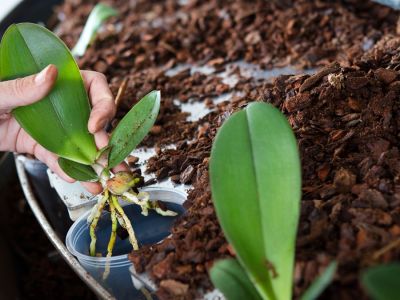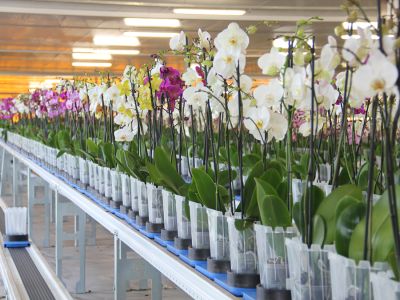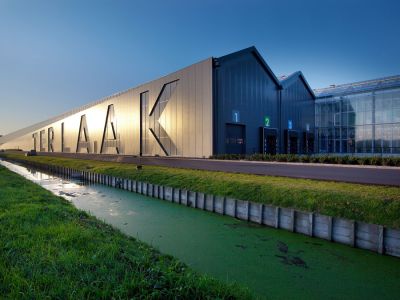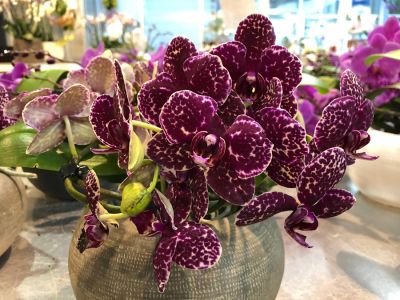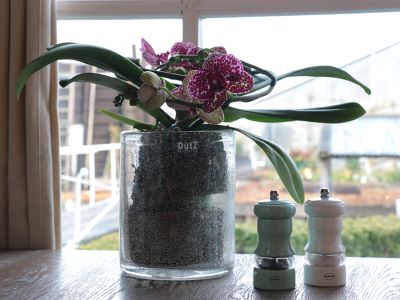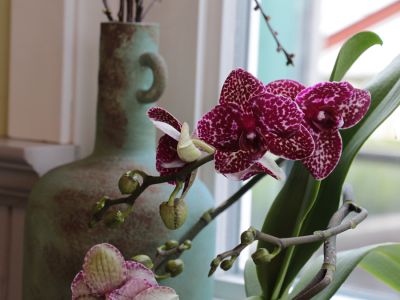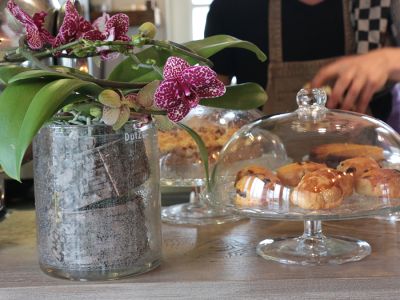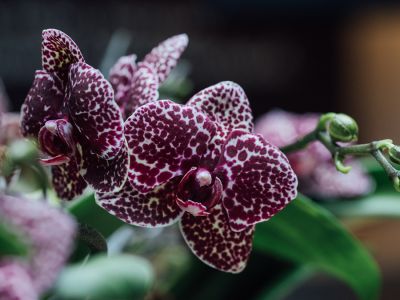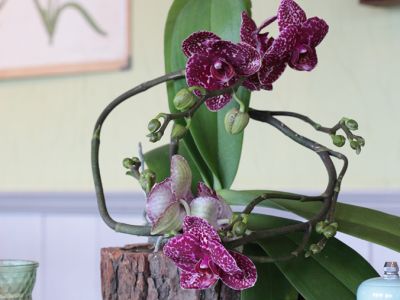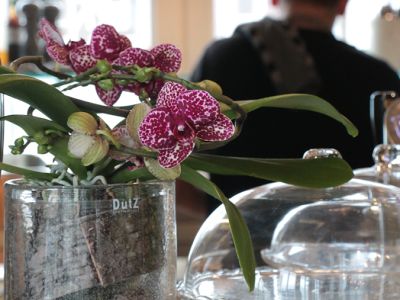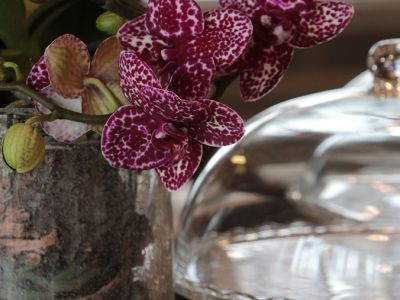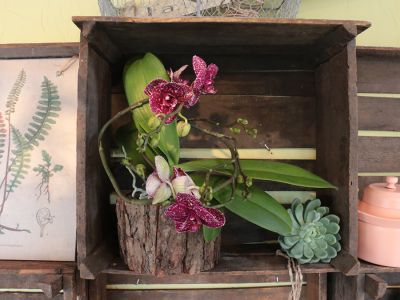Phalaenopsis Meander Wildcat
In the spotlights
In addition to the many special flower types that we at FloraPodium always highlight, there are of course also many types of special plants and growers with their own story. We are expanding our FloraPodium! Because they also deserve a place in the spotlight!
So today we finally start with the FloraPodium for Plants! For this very first edition we have visited a special company with a story that we would like to share. This month in the spotlight: The Phalaenopsis "Meander Wildcat" from nursery Ter Laak Orchids. This Phalaenopsis is not only special because of the intense color or the way it is grown, but also the greenhouse in which it is grown has a special story.
Business philosophy
Ter Laak Orchids was founded in 1954 and is currently being run by brothers Eduard and Richard Ter Laak. The company is fully specialized in the cultivation of Phalaenopsis plants. With over 250 employees and 17.5 hectares of land, they grow around 8 million Phalaenopsis plants per year. Ter Laak is constantly evolving and in the field of technical innovations they are a real pioneer in the market, which means their products have absolute top quality! You can see these technical innovations mainly in the field of sustainable cultivation of Phalaenopsis. In 2018 the grower has built a very sustainable Daylight Greenhouse. Sustainability is a top priority at Ter Laak. Or as they say themselves: “Respect for people and their environment is in our character. Sustainability is woven into our DNA. "
Special concepts
Ter Laak has developed a number of special concepts thanks to special breeding methods. We love the naturally growing Phalaenopsis plants that fit so beautifully with the vintage style of today! In this line Ter Laak has the "Wave" and the "Meander". The Wave owes its name to the short, coarse, wavy branches with the accompanying large flowers. These plants only have small sticks in the pot to support the large flowers, but it also retains its natural shape. The Meander, on the other hand, grows as freely as a meandering river due to its low twisted shape. The flowers have a natural relationship to the leaves, making the plant a beautiful whole. This plant is sold completely without sticks, they are only used for the cultivation of this shape. When the flower stalk starts to grow, it is grown along the sticks but once the branches are fully grown, these sticks are removed and the Meander remains in this form.
In the spotlight!
During our visit to Ter Laak we were shown an assortment of different Phalaenopsis plants. Our eyes fell on the Meander Wildcat, which was immediately noticeable because of its intense dark purple color. What we find so beautiful about this Meander is that every plant is unique! The plant is allowed to grow naturally, so no plant is the same.
- The pictures are made in the 'tuinhuis' of Aalsmeer -

Care
The cultivation
We have already talked about Ter Laak's sustainable greenhouse. In recent years they have also invested a lot of time and attention in this. We explain this sustainable policy under the following headings!
Automation
Our tour of the company gave us a lot of insight into the techniques that can be used to grow Phalaenopsis plants. The entire business process is almost fully automated. For example, all plants can be traced piece by piece via a chip. This chip contains information about the height, the number of branches and the maturity of the plant. This information is obtained through a camera. With this camera, the plants are photographed six times during the entire cultivation process. That way the company gets valuable information and they can work very efficiently. Incidentally, efficient working is not only reflected in automation, but also in the use of space. This is because a second layer is located above the processing space. The plants are packed and stored in the processing room, so daylight is less important here. By placing a second layer on top of it and using it for cultivation, they use their spaces optimally!
A sustainable greenhouse for optimum growth
A Phalaenopsis stays in the nursery at Ter Laak for an average of 1.5 years. They try to make the plant feel right at home during these months. For optimal growth of the plant it is therefore important to mimic the natural environment as well as possible and to give the plant sufficient time. If successful, the plants will get larger flowers, more branches and a better overall quality. The new Daylight Greenhouse partly contributes to this. With the new greenhouse they not only save energy, but they can also grow higher quality plants. This story is quite technical, but we think it is very important to explain this way of growing. How does it work exactly?
Daylight greenhouse
As a child we have all played with a magnifying glass in the sun. You then received a focal point with which you could, for example, burn your name in a piece of wood. The greenhouse works on the same principle! Through special lenses in the roof of the greenhouse, the excess sunlight is centered on a tube with running water. The water is now heated and stored and this heat can be used directly or at a later time to heat the greenhouse. By using this system, Ter Laak can save 45-50% energy, without compromising plant quality. Moreover; thanks to diffused double glazing, the required light is distributed evenly over the plants! This gives each plant the same amount of light and allows them to grow optimally. New techniques in the greenhouse also contribute to top quality plants.
Sustainable for people, nature and the environment
In addition to a Daylight Greenhouse, Ter Laak also started using an underground water storage facility in 2017. This allows unlimited excess rainwater to be stored in the soil, so that it can later be used to spray the plants. This haze is important for the imitation of the natural environment of the orchid, which lives in tropical areas. There are other advantages to this water storage. This is because it prevents salinization of the soil and local residents around the nursery do not get wet feet in the event of heavy rainfall.
All these ways of working ensure that the company is a leader in the floriculture sector. With the MPS Productproof quality mark and the MPS Florimark Production Label, they demonstrate their own sustainability. This means that they meet all requirements in terms of people, the environment and quality. Respect for people and the environment is always of paramount importance to Ter Laak.
FloraPodium, 08 April 2019








